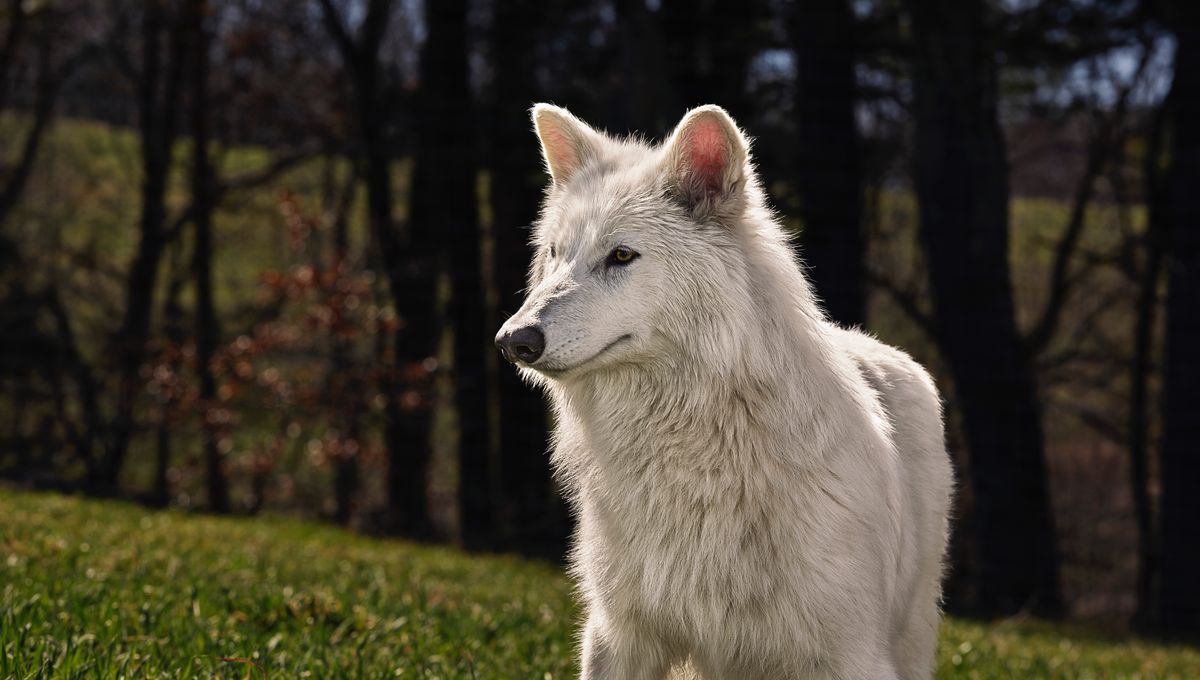
It’s been six months since two not-quite dire wolves were born on Earth around 10,000-12,000 years after the extinction of the species. Now, the two shaggy six-month-olds, Romulus and Remus, along with their younger sister, Khaleesi, are growing rapidly under the care of Colossal Biosciences.
In a new video, the team explains how the two older wolves are progressing. “So today, Romulus and Remus, at a little more than six months old, weigh a little more than 90 pounds [40.8 kilograms], which is about 20 percent larger than a standard gray wolf,” says Matt James, Colossal’s Chief Animal Officer. “So, we can really tell that the dire wolf genes are kicking in, and we’re getting these nice large wolves that are much more representative of what we saw in the ancient specimens.”
James also gave an update on Khaleesi, describing her as “a little smaller, a little younger […] She weighs about 35 pounds [15.9 kilograms], but she’s still tracking about 10, 15 percent larger than what we’ve seen in gray wolves.” The plan is to eventually introduce Khaleesi into the pack with the two older boys.
Showcasing the pups to the world was not without controversy when they were announced in April. Chief among the criticisms was that these wolves are not actually dire wolves, but rather a functionally similar creature, born of both gray wolf and extinct dire wolf DNA.
“To truly de-extinct something, you would have to clone it,” said Associate Professor Nic Rawlence of the Otago Palaeogenetics Lab at the University of Otago, speaking to the New Zealand Science Media Centre. “The problem is we can’t clone extinct animals because the DNA is not well enough preserved.”
Instead, Romulus, Remus, and Khaleesi are genetically modified grey wolves, with 20 changes made to 14 different genes, giving them a much closer physical appearance to the ancient ancestors they seek to emulate. So why make dire wolves that aren’t actually dire wolves?
Unless someone develops a time machine, it seems unlikely that we’ll ever be able to truly de-extinct an animal, but ambitious conservation projects are being carried out across the world utilizing some of the impressive breakthroughs in genetics research that have been made by the Colossal team.
Take red wolves: they’re one of the world’s most endangered species, with just 15-20 thought to be left in the wild. Using the same technologies developed to give rise to the dire wolf-ish pups, Colossal used non-invasive cloning to get four red wolf pups, named Hope, Blaze, Cinder, and Ash. These clones, unlike the three dire wolves, are 100 percent genetically red wolf and were cloned from founder lines, increasing the genetic diversity of the existing population by 25 percent.
Across the world in Kenya, just two northern white rhino females remain. Thanks to monumental conservation efforts, the team hopes to one day use a surrogate female southern white rhino as a means to bring back this species from functional extinction. This process also involves some incredibly difficult genetic research to create embryos from sperm and eggs preserved by the team before the extinction of the last male rhino.
Such ambitious plans are never without their critics, with ethical concerns as well as debates over the language used to describe these animals bound to be at the forefront. Are the wolves that Colossal made truly dire wolves? No, but they are the closest we’ve been for 10,000 years, and they might just help to save other species on the brink of extinction in the process.
Source Link: Colossal’s “Dire Wolves” Are Now 6 Months Old – And They’ve Doubled In Size